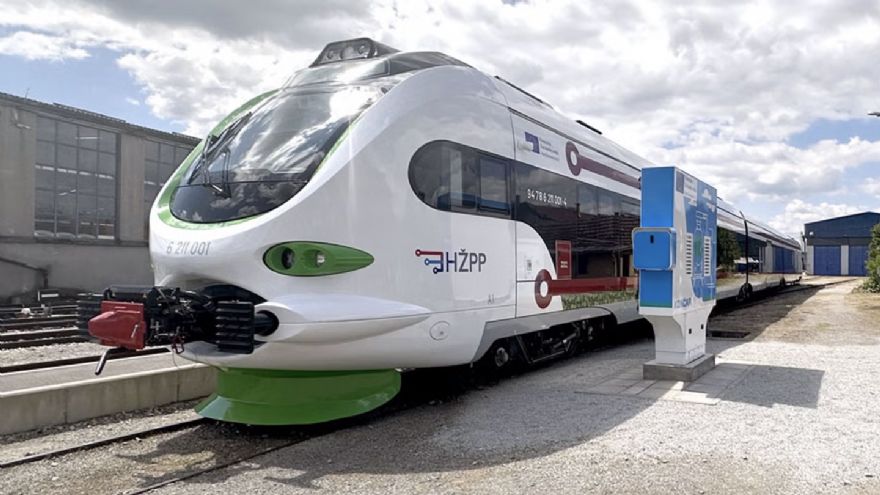
As part of Croatia’s push toward green technology in public transport, the country’s first battery electric multiple unit (BEMU) has been launched into regular service on the Zagreb-Bjelovar-Zagreb route. This BEMU was developed under the Application of Green Technologies in Railway Passenger Transport project and supported by EU funds via the National Recovery and Resilience Plan 2021-2026.
Alongside the train, the project also includes the production of another battery-powered unit and the set up of six charging stations at railway hubs in Split, Osijek, Varaždin, Bjelovar, Virovitica, and Pula. The 17.1-million-euro project, co-financed with 13.3 million euros from European Union (EU) sources, was undertaken by
KONČAR-Electric Vehicles, which is based in Zagreb, the capital of Croatia. The company produced the battery-electric trains and installed the corresponding charging infrastructure.
Oleg Butković, Deputy Prime Minister and Minister of Transport, said: “This is a historic moment, not only for Croatian railways but also for the broader economy. The rollout of the battery electric multiple unit marks a new chapter in the shift toward green and smart mobility. Signed over two years ago, this project reflects the momentum of our national railway modernisation — real, measurable progress that’s already reshaping the system.”
Gordan Kolak, KONČAR-Electric Vehicles’ CEO, added: “The introduction of the battery electric multiple unit marks a pivotal advancement for Croatian industry, both technologically and environmentally. It combines high-capacity energy storage with predictable energy usage profiles, laying the foundation for intelligent optimisation of fleet operations and charging infrastructure. We are currently developing a centralised platform to enable system-wide coordination. KONČAR’s integrated approach — rooted in our expertise across energy, mobility, and infrastructure — ensures the delivery of efficient, future-ready rail solutions.”
The BEMU is designed for an average operational range of up to 480km per day, with the ability to run for up to 18hr daily. It can be coupled with new-generation low-floor trains, allowing for increased capacity during peak demand. Engineered for dual-network operation, the train runs on both electrified and non-electrified railway lines.